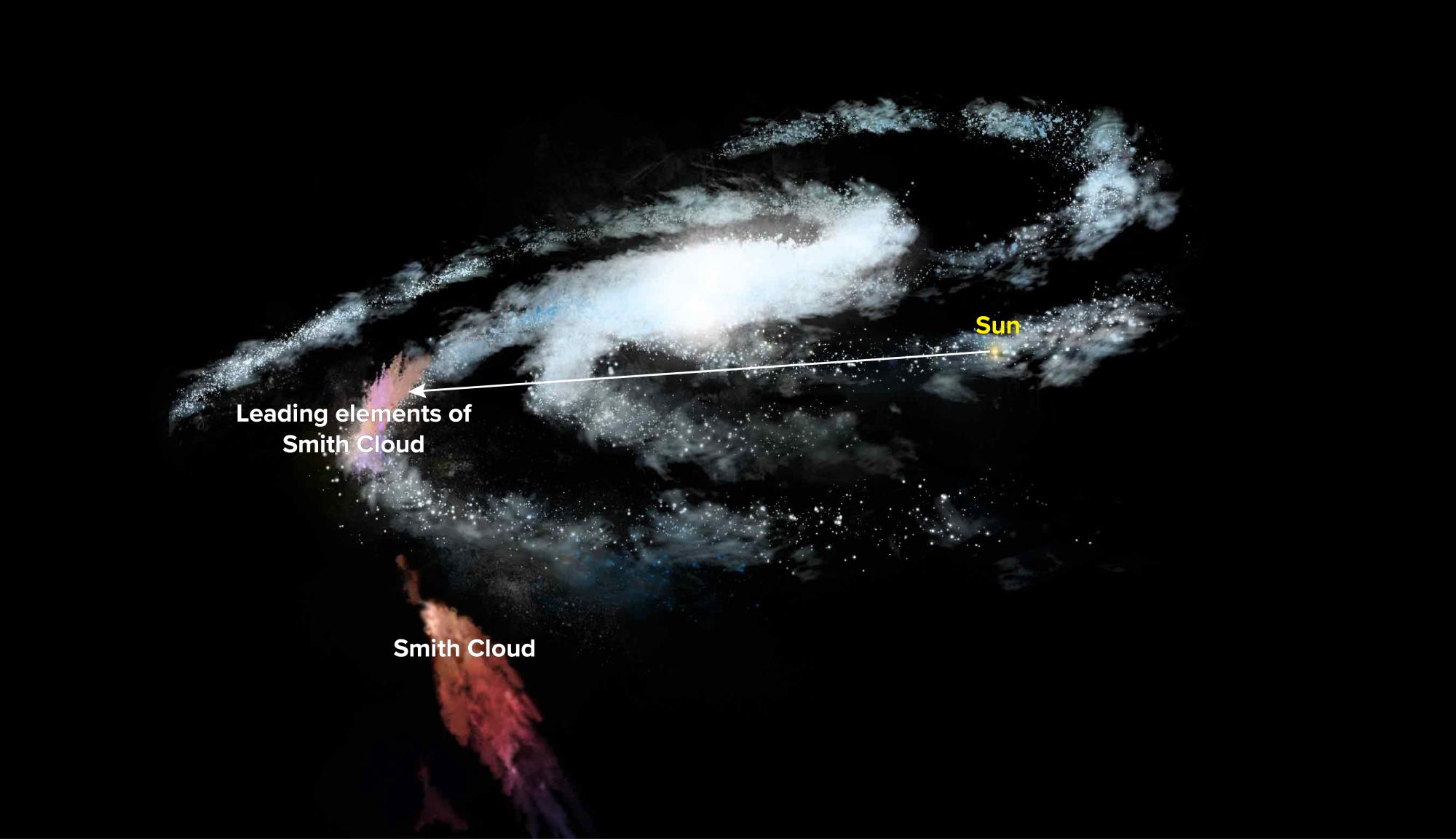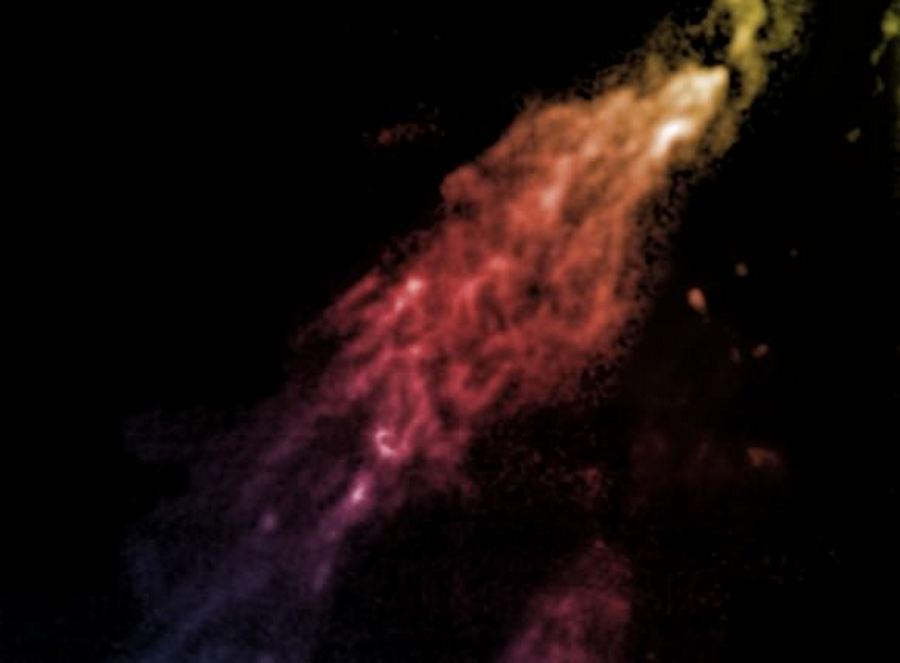At first glance, the night sky seems static. But the reality is quite different – the Universe is very dynamic. Even now, a gas cloud is rushing toward the Milky Way galaxy, which will collide with our galaxy in 27 million years. The team of astronomers that aimed to determine the exact location of the expected collision was unable to do so. But this failure accidentally allowed us to measure the thickness of the Milky Way. After analyzing the data, scientists calculated the thickness of the inner and outer regions of the galaxy, finding a dramatic difference between them.

Astronomers at the U.S. National Science Foundation’s Green Bank Observatory have studied the Smith Cloud, a high-speed cloud of hydrogen gas located in the constellation Aquila at a distance of 36,000 to 45,000 light-years. Previous studies have shown that the cloud has a mass at least 1 million times that of the Sun, measures 9800 light-years long and 3300 light-years wide.
The plan was to observe where the cloud would collide with the Milky Way. This task is difficult because the cloud is on the opposite side of the galaxy. The team, led by Toney Minter, used the 20-meter Green Bank telescope to look for dust and emissions of hydroxyl group molecules (hydrogen and oxygen molecules). They expected to see a difference in the composition of the cloud at the point where it interacted with the galaxy, where there should be very little dust and hydroxyl. Normally, clouds in the Milky Way contain both, so the difference should be noticeable.

The team found no differences in the cloud’s composition, but they discovered other interesting information about the Milky Way. They measured the thickness of the molecule layer in the inner regions of the galaxy, finding that the thickness of the molecule layer in the inner region was 330 light-years, while in the outer parts it was twice as thick, about 660 light-years.
This discovery leaves many unanswered questions. The observation shows a difference in thickness between the inner and outer regions, but doesn’t explain what accounts for this difference. Further observations are needed to model the process underlying it.
Another question that confounds astronomers is the nature and mechanics of the Smith Cloud and how it will affect our galaxy.
Earlier we reported that humanity turned out to be the only intelligent civilization in the entire galaxy.
According to universetoday.com


